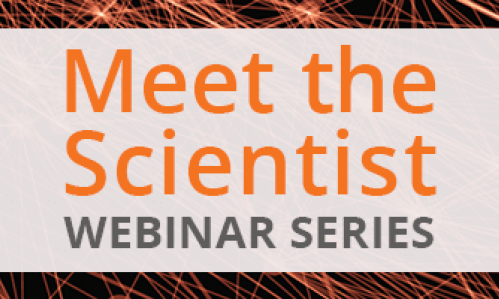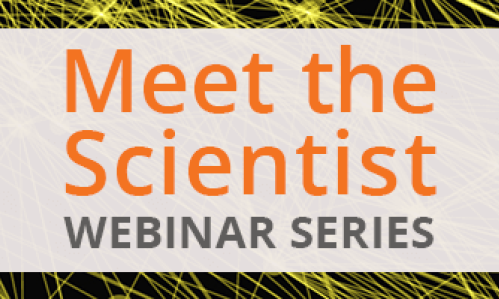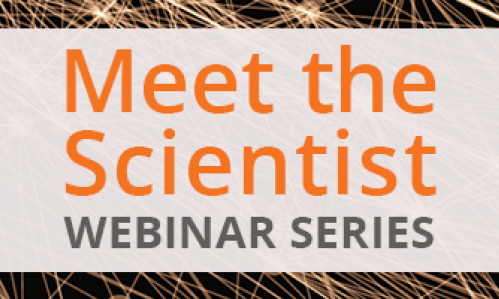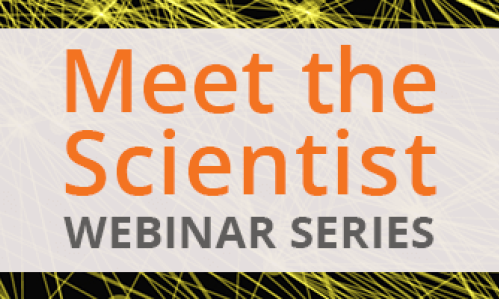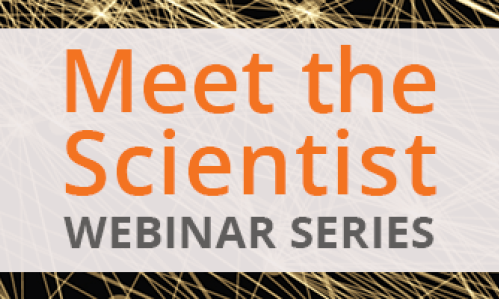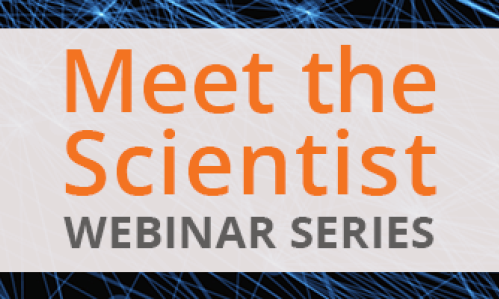Frequently Asked Questions about Depression
Frequently Asked Questions about Depression
Depression (major depressive disorder or clinical depression) is a common but serious mood disorder. It causes severe symptoms that affect how you feel, think, and handle daily activities, such as sleeping, eating, or working. To be diagnosed with depression, the symptoms must be present for at least two weeks.
Impactful Depression Research Discoveries by Foundation Grantees:
- Rapid-Acting Antidepressant Heralded as Biggest Breakthrough in Depression Research in 50 years
- Development of TMS for Treatment-Resistant Depression
- Interactive Parent-Child Therapy Reduced Depression Symptoms in Very Young Children
- Foundation Grantee Shows Treating Inflammation May Improve Resistant Depression
Recent Depression Research Discoveries by Foundation Grantees:
- Impact of Mother’s Depressive Symptoms Just Before and After Childbirth Upon Child’s Brain Development
- Study Links Brain Connectivity Patterns with Response to Specific Antidepressant and Placebo
- Over Two Decades, 90 BBRF Grants Helped Build a Scientific Foundation for the First Rapid-Acting Antidepressants
- After 60 Years, Study Finds Children of Mothers with Bacterial Infections During Pregnancy Have Elevated Psychosis Risk
For more lay-friendly, summarized Depression Research Discoveries, click here.
Clinical depression is a serious condition that negatively affects how a person thinks, feels, and behaves. In contrast to normal sadness, clinical depression is persistent, often interferes with a person’s ability to experience or anticipate pleasure, and significantly interferes with functioning in daily life. Untreated, symptoms can last for weeks, months, or years; and if inadequately treated, depression can lead to significant impairment, other health-related issues, and in rare cases, suicide.
A person is diagnosed with a major depression when he or she experiences at least five of the symptoms listed below for two consecutive weeks. At least one of the five symptoms must be either (1) depressed mood or (2) loss of interest or pleasure.
Symptoms include:
- Depressed mood most of the day, nearly every day
- Markedly diminished interest or pleasure in activities most of the day, nearly every day
- Changes in appetite that result in weight losses or gains unrelated to dieting
- Changes in sleeping patterns
- Loss of energy or increased fatigue
- Restlessness or irritability
- Feelings of anxiety
- Feelings of worthlessness, helplessness, or hopelessness
- Inappropriate guilt
- Difficulty thinking, concentrating, or making decisions
- Thoughts of death or attempts at suicide
The first step to being diagnosed is to visit a doctor for a medical evaluation. Certain medications, and some medical conditions such as thyroid disorder, can cause similar symptoms as depression. A doctor can rule out these possibilities by conducting a physical examination, interview and lab tests. If the doctor eliminates a medical condition as a cause, he or she can implement treatment or refer the patient to a mental health professional.
Once diagnosed, a person with depression can be treated by various methods. The mainstays of treatment for depression are any of a number of antidepressant medications and psychotherapy, which can also be used in combination.
For severe, treatment-resistant depression, studies have been done showing Deep Brain Stimulation may be an option. Learn more in this webinar featuring Dr. Helen Mayberg:
Depression is twice as common among women as among men. About 20 percent of women will experience at least one episode of depression across their lifetime. Scientists are examining many potential causes for and contributing factors to women’s increased risk for depression. Biological, life cycle, hormonal and psychosocial factors unique to women may be linked to women’s higher depression rates. Researchers have shown, for example, that hormones affect brain chemistry, impacting emotions and mood.
Before adolescence, girls and boys experience depression at about the same frequency. By adolescence, however, girls become more likely to experience depression than boys. Research points to several possible reasons for this imbalance. The biological and hormonal changes that occur during puberty likely contribute to the sharp increase in rates of depression among adolescent girls. In addition, research has suggested that girls are more likely than boys to continue feeling bad after experiencing difficult situations or events, suggesting they are more prone to depression.
Women are particularly vulnerable to depression after giving birth, when hormonal and physical changes and the new responsibility of caring for a newborn can be overwhelming. Many new mothers experience a brief episode of mild mood changes known as the “baby blues.” These symptoms usually dissipate by the 10th day. PPD lasts much longer than 10 days, and can go on for months following child birth. Acute PPD is a much more serious condition that requires active treatment and emotional support for the new mother. Some studies suggest that women who experience PPD often have had prior depressive episodes.
Menopause is defined as the state of an absence of menstrual periods for 12 months. Menopause is the point at which estrogen and progesterone production decreases permanently to very low levels. The ovaries stop producing eggs and a woman is no longer able to get pregnant naturally. During the transition into menopause, some women experience an increased risk for depression. Scientists are exploring how the cyclical rise and fall of estrogen and other hormones may affect the brain chemistry that is associated with depressive illness.
For older adults who experience depression for the first time later in life, other factors, such as changes in the brain or body, may be at play. For example, older adults may suffer from restricted blood flow, a condition called ischemia. Over time, blood vessels become less flexible. They may harden and prevent blood from flowing normally to the body’s organs, including the brain. If this occurs, an older adult with no family or personal history of depression may develop what some doctors call “vascular depression.” Those with vascular depression also may be at risk for a coexisting cardiovascular illness, such as heart disease or a stroke.
Researchers are looking for ways to better understand, diagnose and treat depression among all groups of people. Studying strategies to personalize care for depression, such as identifying characteristics of the person that predict which treatments are more likely to work, is an important goal.
The ability of ketamine to produce a rapid and efficacious antidepressant response by a completely novel mechanism is considered by many experts the most important finding in the depression field in 50 years. Originally developed as an anesthetic, ketamine is an antagonist of the NMDA receptor on a subset of brain cells. It often produces rapid (within hours) antidepressant actions in patients who have failed to respond to conventional antidepressants (i.e., are considered treatment-resistant). Ketamine is psychoactive and has potentially dangerous side effects; it has a past history of being abused as a street drug. Studies aimed at characterizing the mechanisms by which ketamine works rapidly and effectively in severely depressed individuals is likely to lead to novel targets and agents that are safer and more long-lasting, and could revolutionize the treatment of depression. Numerous BBRF Grants support this work, including a number that are attempting to develop ketamine analogs – compounds that act like ketamine but lack its side-effects.
Treatment-resistant depression (TRD) is a term used in clinical psychiatry to describe cases of major depressive disorder that do not respond to standard treatments (at least two courses of antidepressant treatments). For many people, antidepressant treatment and/or ‘talk’ therapy (such as Cognitive Behavioral Therapy) ease symptoms of depression, but with treatment-resistant depression, little to no relief is realized. Treatment-resistant depression symptoms can range from mild to severe and may require trying a number of approaches to identify what helps. (Source: Biological Psychiatry)
Treatment of resistant depression has most commonly been treated with electroconvulsive therapy (ECT). ECT has been modified to avoid the pain previously associated with it and is the most effective and quick-acting treatment for resistant depression. The downside is that it works by inducing brain seizures and can impair memory. Its therapeutic benefits can also fade over time. New methods of brain stimulation also offer the possibility of relief. These technologies exploit the fact that the brain is an electrical organ: it responds to electrical and magnetic stimulation to modulate brain circuits and change brain activity. Repetitive transcranial magnetic stimulation (rTMS), pioneered by Dr. Mark George with the support of NARSAD grants, was approved by the FDA in 2008 as a treatment for some otherwise untreatable depressions. rTMS is a noninvasive method that works through a coil held over the target area of the brain. A magnetic field passes through the skull to activate the appropriate brain circuit and no seizures are induced. Deep brain stimulation (DBS), a technique adapted for treating depression by Dr. Helen Mayberg with the support of NARSAD grants, works through electrodes planted deep in the brain. Another method, vagus nerve stimulation (VNS), stimulates the vagus nerve in the neck to therapeutically activate brain function. Magnetic seizure therapy (MST) combines rTMS and ECT to achieve a safer form of seizure therapy. MST has been supported through NARSAD Grants to Dr. Sarah Lisanby. Recently, Foundation grantees at the University of Pittsburgh have successfully experimented on a small number of patients with treatment-resistant depression, discovering underlying metabolic deficiencies and successfully treating these. In one subset of patients, a deficiency in cerebral folate was addressed by administering folinic acid. Patients’ depression symptoms declined significantly when these metabolic problems were treated. For some individuals, depression reached remission.
Learn more about TMS for depression in this webinar featuring Dr. Sarah Lisanby:
The first attempts at defining depression as a biologically-based illness hinged on a theory of a ‘chemical imbalance’ in the brain. It was thought that too much or too little of essential signal-transmitting chemicals—neurotransmitters—were present in the brain. This idea has been useful—that the brain is a kind of chemical soup in which there may be too much dopamine or too little serotonin, but it is now begin replaced by much more sophisticated knowledge about how the brain works, made possible by basic research. All the current antidepressants were developed during the period when the chemical-soup theory was in vogue. But now, many researchers are looking to understand in greater detail the brain biology that underlies depression’s symptoms so that novel therapies can be found.
Throughout this website you will find ideas for new depression treatments in greater detail. Efforts to create new classes of antidepressants, based on novel targets have borne fruit. A docking port on brain cells called the mu opioid receptor is the focus of one such effort. Other efforts focus not on the serotonin pathway, as do current “SSRI” drugs such as Prozac, but another pathway, that of another key neurotransmitter, called glutamate. A previously obscure brain area called the lateral habenula may be involved in depression pathology in some instances, due to glutamate hyperactivity. A drug able to specifically lower the activity in that region is a plausible drug discovery objective. Other researchers have been working on the idea that drugs that can mimic the biochemical and biological factors rendering certain people resilient to factors such as severe or chronic stress may have a future in depression treatment. A drug is now being tested that in preliminary trials has helped to reduce postpartum depression. Other researchers have been studying the ability to help women resist depression in the perinatal period through hormone treatments, or, in other work, via treatments that target the maternal immune system, which may be implicated in a subset of postpartum depression. Research has begun to see if administering certain strains of bacteria in depressed individuals might give a boost to their immune system and help reduce depression symptoms. Trying to alleviate depression via changes in diet – e.g., a Mediterranean diet, in one recent study – or omega-3 (“fish oil”) supplements is the subject of other Foundation-supported research. Yet another path that may lead to better outcomes in the future is bright-light therapy, which was first used to help people with seasonal affective disorder. It may have wider applications. It is also important to note research by grantees that has suggested the ability of even a short course of talk therapy to help alleviate depression in mothers with major depression, while at the same time helping their children. Such therapy worked best when it focused on the mother’s relationship with her child, the research revealed.
Dr. J. John Mann presented a webinar titled: Brain Plasticity: The Effects of Antidepressants on Major Depression in which he discusses why we need to better understand how antidepressants including SSRIs, lithium, and ketamine exert their therapeutic effects, so we can find newer more effective and rapidly acting treatments for depression:
Brain imaging has confirmed the biological nature of many psychiatric illnesses over the past twenty years. Yvette Sheline, M.D., in the mid-1990s, used functional magnetic resonance imaging (fMRI) to identify structural brain changes in depressed patients and established depression as a brain disease.
Using positron emission tomography (PET) scan images, Dr. Helen Mayberg of the Icahn School of Medicine at Mount Sinai, identified, in 2013, specific brain activity that can potentially predict whether people with major depressive disorder will best respond to an antidepressant medication or psychotherapy. This important new work offers a first potential imaging biomarker for treatment selection. A team of researchers including NARSAD Grantee Stefan G. Hoffman, Ph.D., of Boston University and Frida E. Polli, Ph.D., of Massachusetts Institute of Technology have used brain imaging to predict the success of cognitive behavioral therapy, a specific type of talk therapy often used to help treat a wide range of mental illnesses including anxiety disorders, depression, and schizophrenia. Research by Dr. Conor Liston of Weill Cornell Medical School, and colleagues, has used brain scans to identify four distinct “biotypes” of depression. Strikingly, patients in one of these four categories were about three times more likely to respond to a noninvasive treatment known as transcranial magnetic stimulation (TMS) than patients in two of the other categories. This is a good example of the power that biomarkers can have in the years just ahead to help direct people with depression to treatments most likely to help them.
Variations in genes – different kinds of DNA mutations, both common and rare – have been solidly linked to a number of serious psychiatric disorders including schizophrenia, bipolar disorder and autism. It is reasonable to wonder why similar progress has not been made yet in the study of the genetic factors contributing to depression. Researchers have made many attempts to search for such factors, but have not come up with results that statisticians consider “statistically meaningful.” One way of explaining the issue in studying depression concerns that very large number of people whom it affects. The power of massive genomic studies of patients (who are compared with unaffected individuals) evaporates if the people being compared have similar illnesses that have very different underlying genetic profiles. People with major depression might be grouped according to sex; whether or not they have recurrent depression; age at onset; symptom patterns; whether or not they were abused or under chronic stress early in life, for example. There is very good reason for progress on the genetic front, however. Foundation grantee Patrick Sullivan, M.D. and others have had success in finding the first reliable signals of commonly seen genetic variations in people with schizophrenia. To do so, they need to assemble a patient sample, across continents, numbering in the tens of thousands. They founded the Psychiatric Genomic Consortium to accomplish this. PGC scientists estimate that the inflection point in depression studies may be 75,000 to 100,000 study participants, a goal the PGC is working toward. It’s not that there is no genetic signal in depression, in other words. It’s a question of assembling a well-documented sample of patients of sufficient size to “tease out” the embedded genetic “signals,” which will point toward risk genes for the illness.
Donate Now
Donations are welcome



